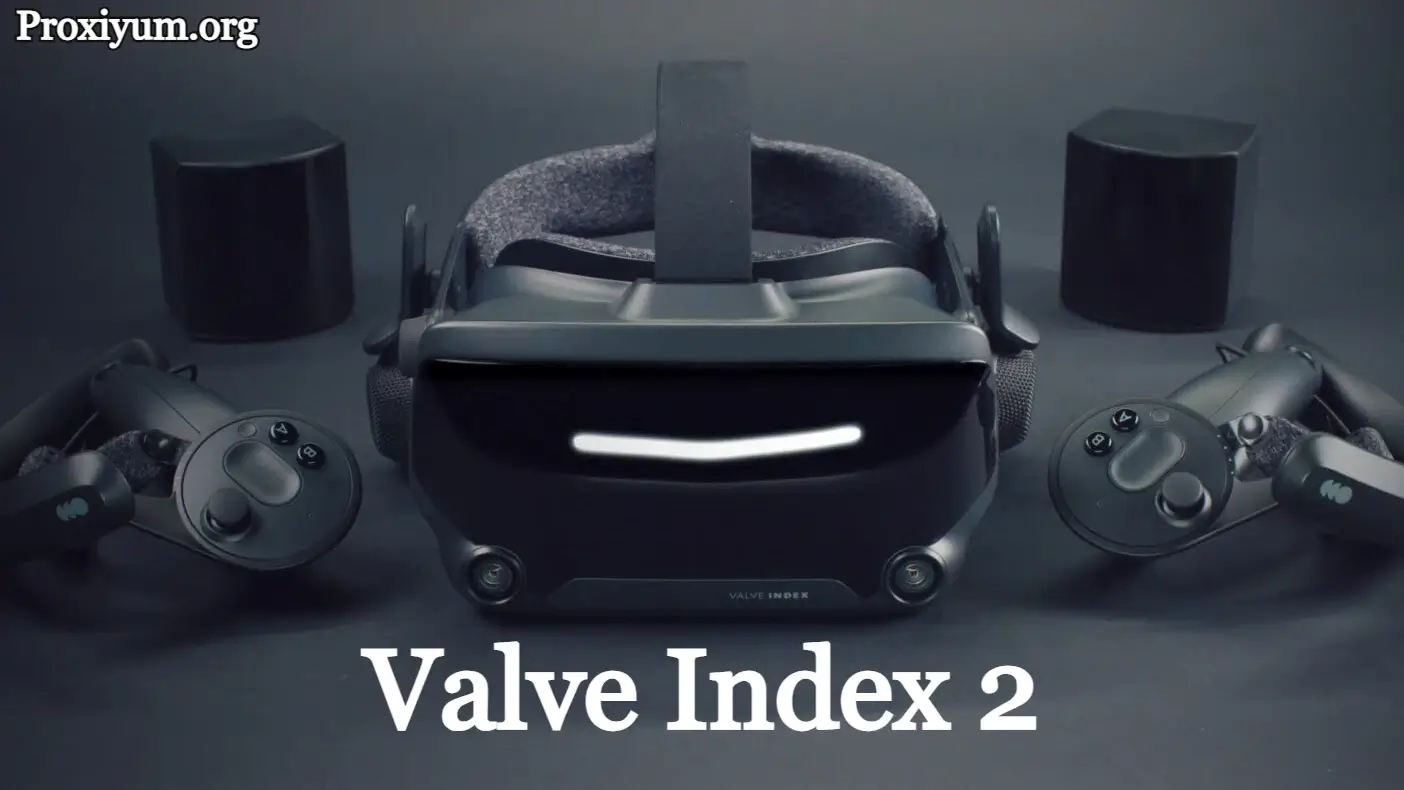Introduction
With rumors swirling around the anticipated release of the Valve Index 2, VR enthusiasts are buzzing about the potential upgrades and features.
As Valve pushes the boundaries of virtual reality technology, understanding what’s real and what’s speculation is crucial.
Let’s dive into everything we know so far about the Valve Index 2 in 2024.
What is the Valve Index 2?
Valve Corporation, the force behind Steam, initially released the Valve Index in 2019. Known for high-quality performance, the Index quickly established itself as a premier choice for VR enthusiasts.
The rumored Valve Index 2 is expected to bring next-level upgrades, promising improved immersion, higher fidelity, and a more user-friendly design.
Valve Index 2 Features and Specs

While there’s no official confirmation yet, several leaked reports and industry rumors hint at some of the Valve Index 2’s possible features. Here’s what we might see:
1. Enhanced Display Quality and Resolution
One of the most anticipated upgrades is a higher-resolution display. Improved resolution means crisper visuals, making virtual environments more lifelike and immersive.
The current Valve Index already boasts a 1440×1600 resolution per eye, so a jump in pixel density could set a new standard in VR.
2. Wireless Capability
One major drawback of the original Valve Index was its reliance on a tethered connection. Many competitors have moved toward wireless solutions, so a wireless Valve Index 2 would be a game-changer, providing users with greater freedom of movement and convenience.
3. Advanced Hand and Finger Tracking
Hand tracking has become a popular feature in modern VR headsets, and the Valve Index 2 will likely incorporate even more advanced tracking technology.
Improved finger and hand-tracking sensors could offer greater precision and enhance the gameplay experience across a wider variety of VR games.
4. Expanded Field of View
A wider field of view (FOV) can make VR experiences feel more immersive by allowing users to see more of their virtual surroundings.
Many expect that the Valve Index 2 will feature an FOV upgrade, giving players a more expansive view within VR worlds.
5. Eye-Tracking Technology
Incorporating eye-tracking would allow the Valve Index 2 to deliver a more immersive experience by adjusting the visuals based on where the user is looking.
This technology could also improve performance by rendering higher-resolution graphics where the eye is focused, reducing strain on the device’s hardware.
Valve Index 2 vs. Competitors
With competitors like Meta’s Quest 3, Sony’s PlayStation VR2, and HTC Vive’s new models, Valve will need to offer significant advancements to remain competitive.
Here’s how the Index 2 might compare based on the expected features:
- Resolution and Display: The Valve Index 2 may surpass the Quest 3 in display quality if it increases pixel density and refresh rate.
- Wireless Freedom: Going wireless would make the Valve Index 2 more versatile, matching the freedom provided by the Quest 3.
- Enhanced Tracking: Improved hand and eye tracking could give the Index 2 a competitive edge, especially in gaming experiences that require high precision.
- Compatibility with SteamVR: As a Steam product, the Valve Index 2 will be optimized for SteamVR’s vast library, potentially offering smoother integration and game compatibility than competitors.
What Sets the Valve Index 2 Apart from Other VR Headsets?
1. Immersive Game Experience with SteamVR
The Valve Index 2 will likely be optimized to work seamlessly with SteamVR, giving users access to a massive library of VR games and experiences.
From action-packed games to virtual reality simulations, SteamVR has something for everyone, and the Index 2 will undoubtedly bring these games to life.
2. Modularity and Flexibility
The original Valve Index offered modular components, allowing users to customize their experience based on their needs.
This customization is expected to continue with the Index 2, appealing to both casual users and dedicated VR enthusiasts.
3. Controller Innovations
Valve’s Index controllers, with “Knuckles” design, are already among the best in the market. The new iteration is expected to offer even more intuitive controls and advanced finger tracking, making interactions feel natural and precise.
Potential Downsides of the Valve Index 2
As with any product, the Valve Index 2 may have some limitations. Here are a few potential downsides based on current information:
- Battery Life: If the Valve Index 2 is wireless, battery life will be critical. A powerful headset may require frequent charging, which could disrupt extended gameplay.
- High Cost: Given its anticipated advanced features, the Index 2 may come with a steep price tag, limiting its accessibility.
- Compatibility Issues: While designed for SteamVR, the Index 2 may face compatibility issues with non-Steam games or experiences, unlike more universal VR systems.
Valve Index 2 in the VR Market of 2024
The excitement around the Valve Index 2 speaks volumes about Valve’s reputation in the VR industry.
The VR landscape is shifting rapidly, with innovations and improvements shaping a future where VR becomes increasingly mainstream.
While the Valve Index 2 promises groundbreaking features, actual performance and functionality will ultimately determine its impact.
Market Expectations
Valve’s focus on quality suggests that Index 2 will aim to deliver an exceptional VR experience rather than just capitalizing on trends.
However, how it competes with wireless VR headsets like the Quest 3 and PSVR2 could influence its popularity and adoption.
Conclusion
In conclusion, the Valve Index 2 is becoming a powerful contender in the VR space, with features that could enhance the immersive experience for gamers and VR enthusiasts alike.
However, until more concrete information is available, it’s best to temper expectations. If Valve delivers on its promises, Index 2 could redefine VR in 2024.
